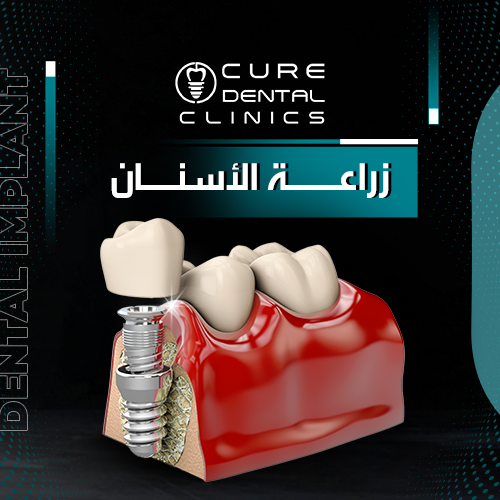What is non-surgical dental implantation
Non-surgical dental implantation, also known as immediate dental implantation, is a procedure used to install dental implants without the need for major surgical intervention. It relies on techniques, including subdermal techniques and computer-guided implantation, reducing damage to surrounding tissues and expediting the healing process without a long waiting period.
Appropriate Cases for Non-Surgical Dental Implantation
Non-surgical dental implantation is considered a suitable option for various cases, but its suitability depends on several factors. Here are some cases that may be appropriate for non-surgical dental implantation:
- Adequate bone density: When there is no need for surgery and minimal impact on surrounding tissues, reducing pain and recovery time.
- Cosmetic improvement without major surgery: When there’s a need to enhance aesthetic appearance without resorting to significant surgery.
- Temporary tooth replacement during the waiting period for implant fusion.
- Immediate fixation of artificial teeth without a long waiting period.
Benefits and Advantages of Dental implants without surgery
- Minimal surgical intervention: Reduces pain and recovery time.
- Preservation of tissues: This procedure doesn’t require large tissue cuts, minimizing the impact on gums and surrounding bone.
- Avoidance of traditional surgery: Some patients prefer avoiding traditional surgery and long recovery periods, making this option suitable for them.
- Shorter healing period: With no major surgery, patients can generally benefit from a shorter overall healing period.
- Reduced swelling and pain: Less impact on surrounding tissues leads to reduced swelling and pain.
- Suitable for some cosmetic cases: Non-surgical dental implantation can be used in certain cosmetic cases where major surgical intervention is not the primary goal.
- Immediate fixation of temporary teeth: In some cases, temporary teeth can be immediately fixed after dental implantation, providing an instant smile.
- Reduced infection risks.
- Faster bone fusion: The non-surgical nature stimulates a faster fusion process between the implant and the bone.
- Alleviation of anxiety and stress: The ease of the procedure reduces anxiety about surgery, enhancing the overall treatment experience.
- Lower cost: Costs are generally lower due to the lack of major surgery and reduced treatment duration.
- No complex preparation steps: The implantation process is smoother, often occurring in a single visit to the dentist.
- Suitable for simple to moderate cases: Non-surgical dental implantation can be successfully used in cases of mild to moderate tooth loss.
These are a set of advantages that make non-surgical dental implantation an attractive option for many patients. However, patients should consult with a dentist to assess their specific situation and determine whether non-surgical dental implantation is the optimal choice to meet their individual needs and expectations.
How to Perform Non-Surgical Dental Implantation
Computer technology provides precise bone assessment through CT scans, evaluating bone health and determining areas with optimal bone density. This aids in accurately placing the implant without affecting vital structures like nerves and arteries. Additionally, a permanent dental prosthesis is created before the implantation.
The process is quick due to the absence of traditional surgery. A surgical incision is made in the gum in the targeted area for implantation, and laser rays are used to create a hole with dimensions matching those of the implant in the bone.
The mouth is anesthetized, and the non-surgical implantation process usually takes less than 20 minutes for immediate implantation.
While the actual surgery may last a short time, possibly just one hour, there is also a vital preparation stage that can range from 2 to 4 weeks.
Factors Hindering Non-Surgical Dental Implantation
Despite being suitable for many cases, there are factors that may hinder non-surgical dental implantation in certain situations. Among these factors are:
- Bone deficiency: If there is a lack of bone quantity in the implantation area, the region may need to stimulate bone growth before dental implantation.
- Gum problems: Inflammations or other health issues affecting gum health may pose obstacles to non-surgical dental implantation.
- Insufficient blood platelets: Adequate blood platelets are crucial for bone healing around implants. A shortage of blood platelets may hinder the bone healing process.
- Inadequate space: There might not be sufficient space in the mouth to accommodate non-surgical implants, necessitating the stimulation of bone growth to create more space.
- Bone diseases: Certain chronic or hereditary diseases can affect bone strength, making non-surgical dental implantation challenging.
- Problems arising from adjacent teeth: Issues with adjacent teeth, such as decay or infections, can be obstacles to dental implantation.
- Anesthesia requirements: In some cases, there may be a need for limited or local anesthesia, which may not be suitable for certain patients.
